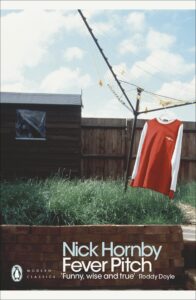 Where do you start with this review? In finishing reading this book and reflecting on the experience, my views and thoughts have been many and varied, which has subsequently made the task of writing a critique a difficult one. So let’s start with some basics.
Where do you start with this review? In finishing reading this book and reflecting on the experience, my views and thoughts have been many and varied, which has subsequently made the task of writing a critique a difficult one. So let’s start with some basics.
The author Philippe Auclair is a freelance journalist who has worked as the United Kingdom correspondent for the French magazine, France Football and broadcaster at RMC Radio for a number of years. Auclair has also written, Cantona: The Rebel Who Would Be King, which won the 2010 British Sports Book Award for Best Football Book. This second book is an unauthorised biography, but as Auclair says in the Acknowledgements, “…Thierry Henry himself, who was aware of my project…from the start, made no attempt to interfere with it or impair my research…I’m grateful to him for that…”
In terms of the book itself, it is set over 337 pages, but contains none of the glossy pages of pictures that accompany most of the autobiographies and biographies published today. Instead, there are simply a series of black and white images which adorn the page at the start of end new chapter and act as an introduction and lead into each section of the book. It may seem a stupid thing to say but this biography is all about the words and the sparse images act merely to compliment the text. For the most part the book follows a chronological path from Henry’s birth in Les Ulis (a suburb of Paris), through his youth football career, and his international and club appearances up to his loan spell at Arsenal in early 2012.
As for the title of the book, “Lonely at the Top”, this is open to interpretation. It could refer to the playing position of Henry, and the question of whether his transformation from wide player to centre-forward was successful. Or it is saying that Henry was a lonely figure by choice at having only a small group of trusted people through his career? In truth there is an element of both as Auclair seeks to find answers to both of these conundrums.
All clear so far? So why has this book proved a difficult one to review? Part of it lies in the fact that Auclair hasn’t written a run of the mill biography which blindly goes from season to season in a sycophantic ‘the boy done good’ manner. This is a book which has been incredibly well researched and has a gravitas that at times reads like a University dissertation as Auclair seeks to answer questions about Henry, Arsenal and the French national team. Along the way the reader comes to learn about the dominating figure that was Henry’s father (Tony) and the incident that broke that bond, when a proposed move from Monaco to Real Madrid went very badly wrong. Unsurprisingly, Auclair points to the pressure and influence of Tony on his son and the ‘Real fiasco’ as having a lasting impact on Henry.
What lies at the centre of this book is a view of Henry from both sides of the channel and which seems to present two very different animals. Auclair is able to do this because of his French roots on the one hand and as an Arsenal supporter living in London on the other. Therefore it may be that English readers (whether Gunners fans or not), will be perplexed by their view of Titi, the record breaking hero of Highbury and The Emirates, compared with that of a fallen idol in his homeland whose international career can now never be separated from “The Hand of Gaul” incident against the Republic of Ireland which sealed Les Bleus qualification for the 2010 World Cup.
Indeed, Auclair uses the book to explore the French national team through Henry’s involvement in various World Cup and European Championship tournaments. The World Cup triumph of 1998 and the European Championship win in 2000 are analysed as the stock of Henry and the national team reached its peak and gave rise to the “…black-blanc-beur…” (black-white-arab), vision of French society as represented by its football team. However, this dream is slowly dismantled starting with the Group exit in Japan/Korea at the 2002 World Cup and is completely shattered by the players strike in the embarrassing exit at the 2010 World Cup in South Africa.
Auclair makes a case for ending the book with that disastrous campaign in South Africa, but in a Postscript that takes in Henry’s move to the New York Bull’s in 2011 and a cameo at Arsenal at the beginning of 2012, there is a positive ending. Incredibly for a book that is written so well and is all about the words, the ‘last-word’ is actually achieved by an image. Just check out page 331…
 For many people watching football is mere entertainment, to some it’s more like a ritual; but to others, its highs and lows provide a narrative to life itself.
For many people watching football is mere entertainment, to some it’s more like a ritual; but to others, its highs and lows provide a narrative to life itself. Where do you start with this review? In finishing reading this book and reflecting on the experience, my views and thoughts have been many and varied, which has subsequently made the task of writing a critique a difficult one. So let’s start with some basics.
Where do you start with this review? In finishing reading this book and reflecting on the experience, my views and thoughts have been many and varied, which has subsequently made the task of writing a critique a difficult one. So let’s start with some basics.